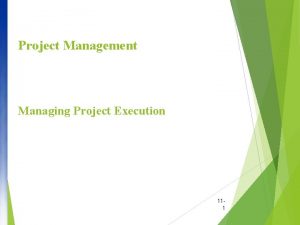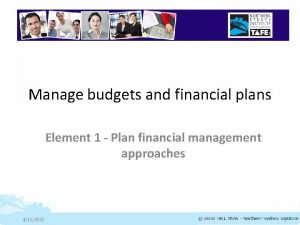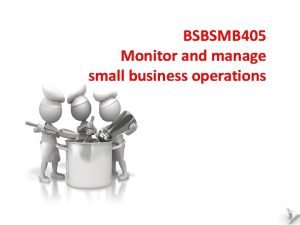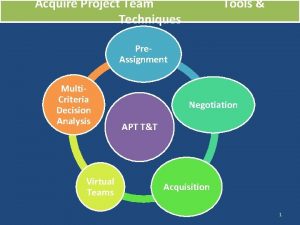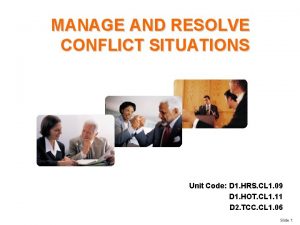How to avoid and manage situations of conflict








- Slides: 8

How to avoid and manage situations of conflict of interests For better use of EU funds Laurentiu Costin, Legal Officer European Commission DG Budget

Why avoid conflicts of interests? § Protect sound financial management of EU funds § Ensure impartiality of staff involved in the implementation of EU funds § Preserve public trust in EU and national administrations

What is a conflict of interests? § Regulation EU 2018/1046 of 18 July 2018: the Financial Regulation § Definition: ‘where the impartial and objective exercise of the functions … is compromised for reasons involving family, emotional life, political or national affinity, economic interest or any other direct or indirect personal interest’ § Also: ‘situations which may be objectively perceived as a conflict of interests’ ‒ ‘Perception’ comes from Procurement Directive 2014/24 (01/01/2016) ‒ ‘Objectively’ (added in Financial Regulation): verifiable (auditable) link between the functions and the personal interest

Who is concerned? Financial actors and other persons, including national authorities at any level, involved in budget implementation under direct, indirect and shared management, including acts preparatory thereto, audit or control. In shared management: § National, regional and local authorities, staff or members of these authorities including government members. § Involvement in the implementation of EU funds: importance of the functions and the ‘proximity with decision making process’.

Obligations for those concerned § Refrain from action which may bring a person’s interests into conflict with those of the Union § Prevent conflict of interests from arising in the functions under a person’s responsibility § Address situations which may objectively be perceived as conflict of interests § Procedure if member of EU staff or national authority is concerned: ‒ Information of hierarchical superior - confirmation - cessation of activities - further action

Shared management: who does what? Member States to act first: § Establish internal control systems including avoidance of conflict of interest, and audit these systems § Establish prevention measures (e. g. declaration of absence of conflict of interests, assets disclosure) § Establish whether a conflict of interest exists in a given case and apply mitigation measures if conflict is confirmed Commission to: § Monitor conformity of national systems with EU requirements § Audit Member State internal control systems (on risk basis) § Apply appropriate measures to protect the Union budget: suspension of payments, corrections if breaches of applicable law are identified

Examples of mitigating measures § Restrictions on ancillary employment § Declaration of personal and family income § Declaration of personal and family assets § Public disclosure of income and assets § Recusal and routine withdrawal from public duty § Personal and family restrictions on property titles of private companies § Divestments (sale of business or blind trust)

Conclusion § Compliance with EU rules on conflict of interests when Member States implement EU funds is a shared responsibility (interplay EU law - national law) § Need for guidance to create a level playing field for the protection of EU funds in all Member States § Importance of further exchanges of best practices
 A struggle between a character and an outside force
A struggle between a character and an outside force What is conflict and conflict resolution?
What is conflict and conflict resolution? Internal vs external conflict examples
Internal vs external conflict examples 111 project
111 project Manage budget and financial plans
Manage budget and financial plans Compare sources of information on professional development
Compare sources of information on professional development Manage and maintain small/medium business operations
Manage and maintain small/medium business operations Acquire resources tools and techniques
Acquire resources tools and techniques Manage personal and professional development
Manage personal and professional development



